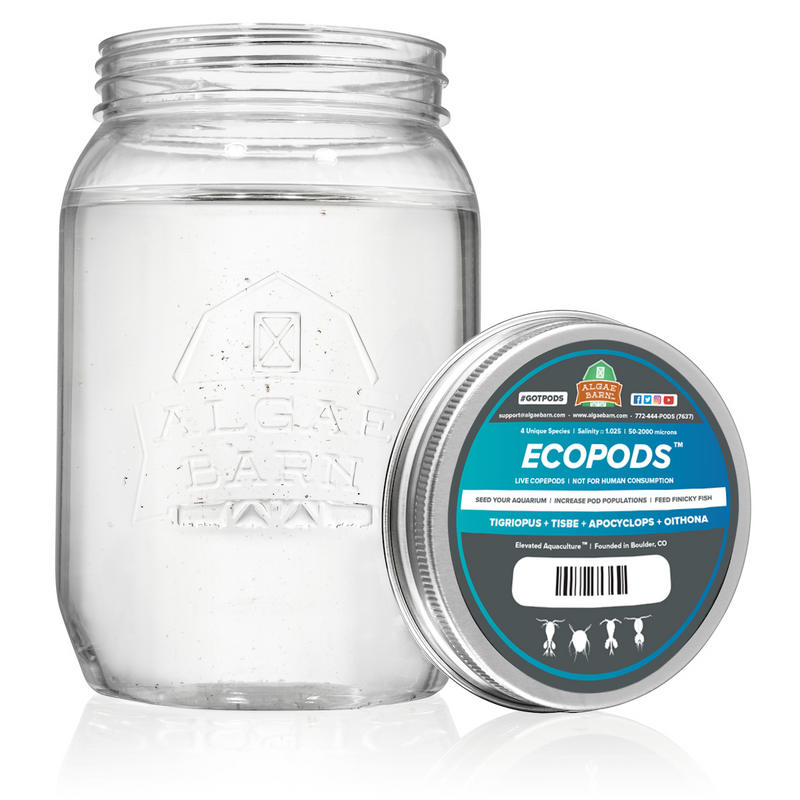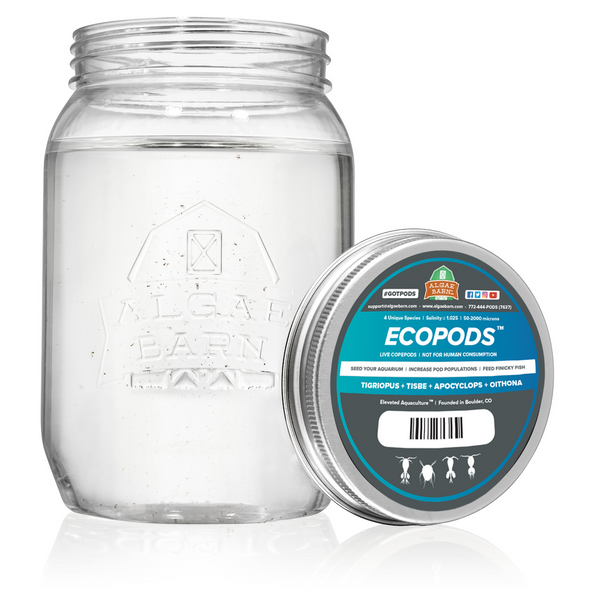Description
Microcrustaceans such as amphipods, isopods and copepods are a vital component of nearly every aquatic ecosystem on Earth from marshy roadside ditches to the deepest seas. Copepods (subclass Copepoda) are especially important, as they are the most abundant animal species on the planet and are a nutritious food source for diverse marinelife. Often, multiple copepod species are present in complex habitats (e.g. tropical coral reefs) with each kind occupying its own special ecological niche. Much is the same in the artificial environment of a reef aquarium, which is why EcoPods is one of the most important live zooplankton products that you'll ever use. All four copepod species in EcoPods fulfill valuable roles in captivity. Each consumes detritus and film algae, boosting the efficiency of any clean-up crew. Their tiny young make an excellent meal for zooplanktivores such as corals while the adults are eagerly snatched up by small fishes such dragonets, seahorses, anthias, etc. Because of each species' differences in size and habit, this product "works" better than any one or two or three of the species contained therein. As in Nature, a balanced community of copepods such as those in EcoPods promotes the normal movement of nutrients and food energy across the entire food web!
Shipping: Live Foods Ship on Select Days & Have a 100% Arrive Alive Guarantee.
Tigriopus Californicus
Loaded with essential amino acids and omega fatty acids, Tigriopus copepods make a nutritious meal for the most finicky fish. These large copepods swim into the water column, jerking around when they move and making them an easy target for small fish. Females will lay hundreds of eggs during their life cycle. They are an especially important cleaner pod, consuming piles of detritus and nuisance algae in your display tank and refugium. They contain high amounts of carotenoids which can enhance and brighten the colors of your fish and coral.
Tisbe Biminiensis
These smaller copepods tend to inhabit the cracks and crevasses of gravel, live rock, macroalgae, etc. Their ability to hide, as well as their more nocturnal nature, helps them to maintain large population in marine aquaria. Tisbe copepods make for a highly nutritious fish and coral treat, while mopping up the smallest bits of detritus and algae; think of these guys as the smallest mouths in your food chain.
Apocyclops Panamensis
These hardy copepods are slightly larger than Tisbe pods and slightly smaller than Tigriopus copepods. This intermediate size makes them a great live snack for your finicky fish and coral. Apocyclops copepods are extremely nutritious with a very high content of growth enhancing protein and amino acids. These warm water copepods reproduce extremely quickly laying eggs every 4-6 days--about twice the rate of Tisbe and Tigriopus! As adults, Apocyclops copepods lay eggs before becoming pelagic and make their way into the water column where they provide a sustainable and nutritious live food source for fish and corals alike.
Oithona Colcarva
These are hardy, marine cyclopoid copepods that generally live in shallow nearshore waters. As this species (1) produces a very small (45 micron) nauplii and (2) appears to have a rather weak escape response, it is well-suited as a feed for a wider range of coral species including many soft corals. Oithona is more difficult to find in the trade than the above species, but is quite beneficial! PLEASE NOTE: EcoPods contains a range of juvenile to adult copepods. Juveniles are very difficult to see with the naked eye upon arrival, though they are ideal for establishing permanent copepod populations; this is because livestock do not consume them (they can barely see them) immediately after you add them into your tank!








